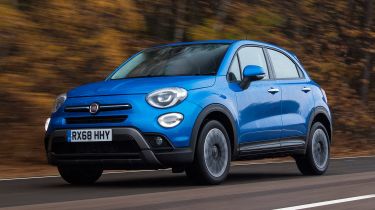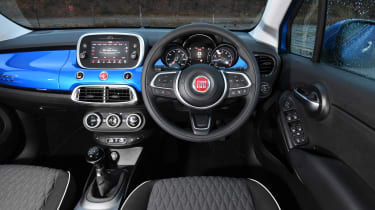Fiat 500X review - Engines, performance and drive
The 500X’s sharp handling is a surprise for a small crossover

The huge variation in the way the 500X used to drive has gone with the trimming of engine and gearbox options.
Gone is the 1.6-litre non-turbo petrol, as well as both the 1.3 & 2.0-litre diesels. The nine-speed auto box and any 4WD option have been removed, too. All cars are now powered by peppy turbo petrol engines.
The lower weight in the nose boosts the 500X's handling, and the Fiat feels agile for a high-riding crossover. On the right road, the handling is surprisingly sharp and there’s loads of grip, even if four-wheel drive is no longer offered. On the motorway the cabin is whisper quiet, too, making the car well suited to long trips.
• Best crossovers on the market
We have concerns about the ride on bigger wheels, though, and if you go for a model fitted with 18- or 19-inch alloy wheels, you may well notice the car fidget and shake more over poor surfaces.
Engines
There are two petrol engines in the 500X line-up. The old 1.6 E-TorQ 110 was ditched in 2019, but that's no hardship as it felt strained and wasn't all that economical. It offered a fairly weedy 109bhp and was good for 0-62mph in 11.5 seconds, with a maximum speed of 112mph.
The new entry-level motor is the 1.0-litre turbocharged FireFly, which is available in all model grades. It makes 118bhp with 190Nm of torque, and gives the 500X a 0-62mph time of 10.9 seconds and a 117mph top speed. It's much peppier and punchier than the old E-TorQ unit, and suits the car down to a tee.
The four-cylinder 1.3 FireFly engine has 148bhp and comes with a twin-clutch DCT semi automatic gearbox as standard. It still drives the front wheels, and has a 0-62mph time of 9.1 seconds – while top speed is 124mph. The six-speed DCT gearbox is a lot better than the old nine-speed transmission.








